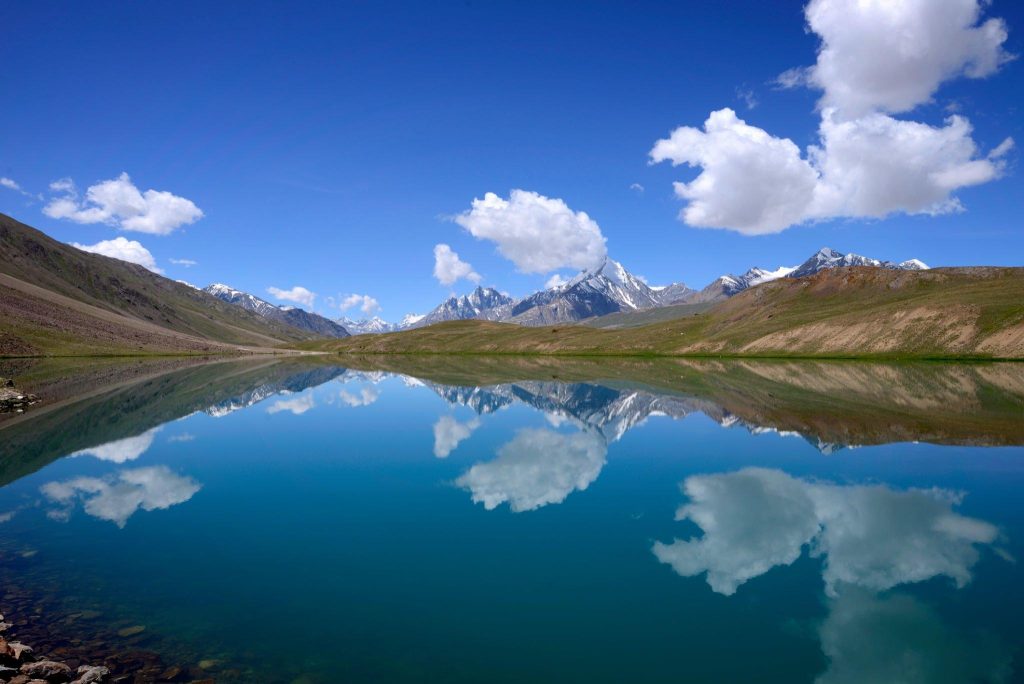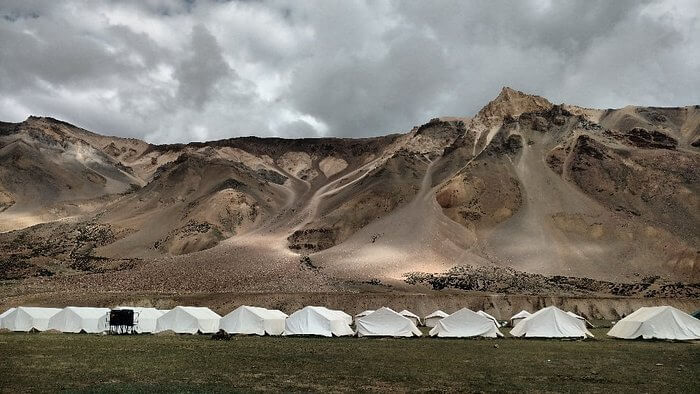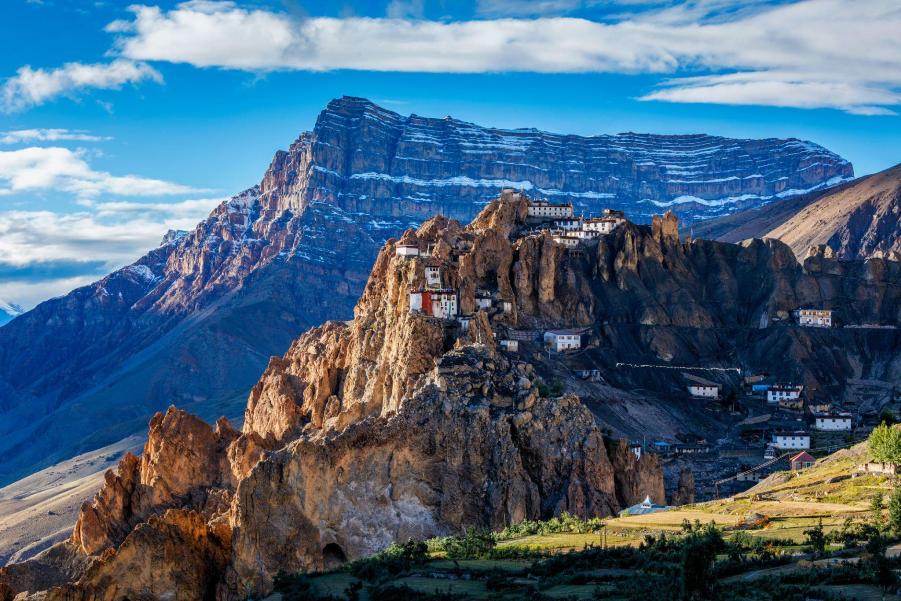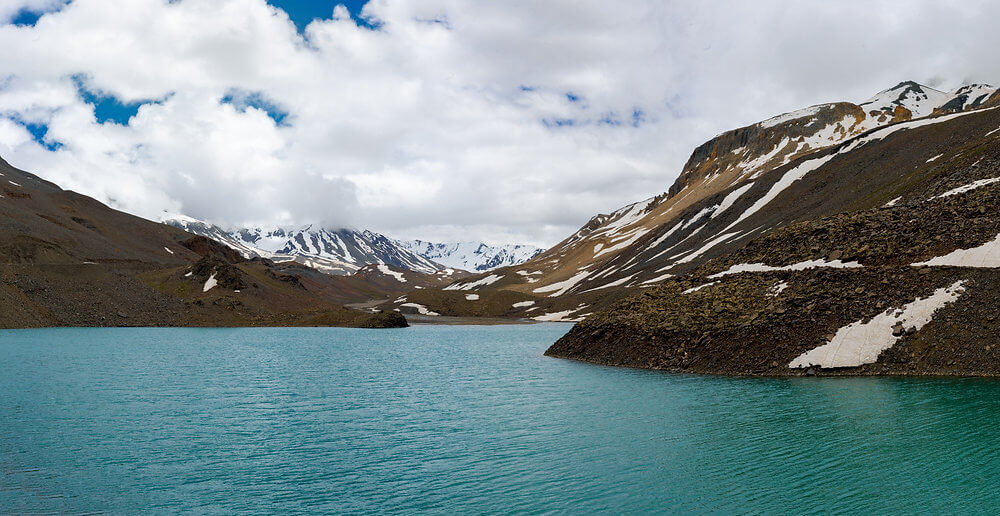Spiti Valley Honeymoon Tour Package
Spiti Valley Family Tour Package
Spiti Valley Group Tour Package
Spiti Valley Bike Trip 8N/9D
Spiti Valley Tour Package
Spiti Valley Honeymoon Tour Package
Spiti Valley Family Tour Package
Spiti Valley Group Tour Package
Spiti Valley Bike Trip 8N/9D
Spiti Valley Tour Package
Spiti Valley Honeymoon Tour Package
Spiti Valley Family Tour Package
Spiti Valley Group Tour Package
Exploring the Frozen Wonderland: A Guide to Spiti Valley in January
Looking for a winter adventure that will leave you breathless? Look no further than Spiti Valley in January. Nestled in the mighty Himalayas of Himachal Pradesh, this remote region is transformed into a frozen wonderland during the winter months. With its pristine snow-covered landscapes, towering mountains, and crystal-clear blue skies, Spiti Valley offers a unique and unforgettable experience for the intrepid traveller.
In this guide, we will take you on a journey through Spiti Valley during January month, providing you with everything you need to know to plan your trip. From the best time to visit to the top attractions to explore, we’ve got you covered. Whether you’re an adventure seeker looking to conquer icy treks or a nature lover yearning for the serenity of the snow-covered valleys, Spiti Valley has something for everyone.
So bundle up, pack your warmest clothes, and get ready to embark on an extraordinary winter adventure in Spiti Valley. It’s time to experience the magic of this frozen wonderland firsthand.
Book here Spiti Valley Tour Packages.
Weather and Climate in Spiti Valley during January
Spiti Valley experiences extreme weather conditions during January, with temperatures dropping well below freezing point. The average temperature during this time ranges from -15°C to -25°C, making it one of the coldest regions in India. However, despite the freezing temperatures, the clear blue skies and the lack of precipitation make it an ideal time to visit.
The dry weather during January means that the roads are usually accessible, although it is advisable to check the road conditions before travelling. The frozen landscapes offer a mesmerizing sight, with snow-covered mountains and frozen rivers creating a picturesque backdrop. It’s important to pack layers of warm clothing, including thermals, down jackets, and sturdy boots to stay comfortable in the cold weather.
Travelling to Spiti Valley in January requires careful planning and preparation, but the reward is the opportunity to witness the stunning beauty of this frozen wonderland in all its glory.
Top Places To Visit In Spiti Valley
1. Chandratal Lake

One of the most stunning lakes, Chandratal Lake, is situated in the great Himalayas at a height of roughly 4300 meters. The lake is the source of the Chandra River and is located on the Samudra Tapu plateau in the Lahaul region of the Lahaul and Spiti district.
The crescent-shaped lake earned the name “Chandra Taal” (Lake of the Moon). Additionally, this lake is one of the two high-altitude wetlands in India that have received the Ramsar designation. It now draws tens of thousands of adventure seekers after serving as a temporary dwelling for Tibetan traders visiting Spiti and the Kullu region. As the day draws to a close, the hue of the water in this sacred lake keeps shifting from reddish to orange to blue to emerald green. The nicest camping spots may be found among vast lengths of green meadows, which are also home to a variety of wildflowers in the spring.
According to legend, Yudhishthira, the eldest of the Pandava brothers, was brought up by God Indra’s chariot from a location near the Chandratal Lake. Due to this feature, a large number of Hindu devotees go to the lake, making it sacred. Although the journey from Batal to Chandratal can be arduous, the breathtaking scenery and charm of the region make it worthwhile. Chandratal Lake appears to be crystal clear as the sun’s light reflects off its surface.
2. Tabo Monastery

One of the oldest monasteries is the Tabo Monastery, which is situated in the Tabo Village of the Best Places to Visit in Spiti Valley at a dizzying height of 10,000 feet. It is, in fact, the oldest monastery in both India and the Himalayas that has always been in operation. The ‘Ajanta of the Himalayas’ is a term used to describe this beautiful monastery.
The monastery’s walls are adorned with intriguing murals and historic paintings, giving rise to its name and similarity to the Ajanta Caves in Maharashtra. The Tabo Monastery, which is proud to have retained the beautiful traditions and heritage of Buddhism in the form of artistic murals, detailed paintings, gorgeous stuccos, and exquisite frescoes, is situated serenely on the left bank of the dazzling Spiti River.
The Archaeological Survey of India has assumed control of maintaining and preserving one of the most historically significant places in the Buddhist civilization. This culturally rich heritage monument, which covers an area of 6300 square kilometers in the chilly desert of the Tabo Valley and is encircled by thick walls made of mud bricks, is widely venerated by Buddhist monks and is second only to the Tholing Gompa in Tibet in terms of importance. The Tabo Monastery, which was built by the renowned Buddhist king Yeshe-O, is today a treasured treasure in the Buddhist world.
3. Sarchu

People who travel along the Leh-Manali Highway frequently choose to overnight in Sarchu, which is located on the border of Ladakh and Himachal Pradesh. It is 252 kilometres from Leh and 222 km from Manali.
At 4,290 meters above sea level, Sarchu is also known as Sir Bhum Chun. Between the Lachulung La and Baralacha La mountains in the north and south, it is located. It takes roughly two days to travel due to its high altitude and bad road sections. As a result, to unwind, travelers and tourists camp at Sarchu.
The Leh-Manali route passes by the camping area on the Himalayan mountain range, which provides a dual view of the surrounding landscape. Between May and October, a lot of semi-permanent campers are open from where one can slowly admire the natural beauties. Knowing that Sarchu was a significant Silk Road commerce hub is exciting. The nomadic tribes, traders, and adventurers continue to enjoy its popularity.
4. Dhankar Monastery

Dhankar Monastery, also known as Dankhar, Drangkhar, or Dhangkar Gompa, is located in the Himachal Pradesh district of Lahaul and Spiti. The monastery gives a panoramic view of the Best Places to Visit in Spiti Valley and is located precariously on the edge of a cliff at an elevation of 12,774 feet. Dhankar Monastery, one of the world’s 100 most endangered monuments, was constructed a thousand years ago on a mountain that rises 1,000 feet above sea level and offers breathtaking views of the confluence of the Spiti and Pin rivers.
The monastery has gained popularity as a popular tourist attraction since it is one of the major centers of Buddhist art and culture. The Dhankar Hompa features beautiful views in addition to the statue of Dhayan Buddha and a tiny museum that houses sacred texts and artwork. In the village of Shichilling, which is located under the monastery, there is a new monastery that is home to about 150 Gelug school monks. The picturesque Dhankar lake is accessible by a 2 kilometer walk from the monastery.
5. Suraj Tal Lake

Suraj Tal Lake, which is 4950 meters above sea level, is ranked as India’s third-largest lake. Suraj Tale is located in the Best Places to Visit in Spiti Valley. ‘The Lake of Sun God’ is what it literally means. The breathtaking lake located just below the Baralacha pass should unquestionably be seen while here, especially if one enjoys photography. One of the most picturesque and dreamy lakes is the Suraj Tal.
“The Suraj Tal lake draws a lot of people and is regarded as spiritual because it is thought that swimming in it cleanses one of their sins.”
However, the main factor in the lake’s rise to fame is its proximity to the well-known Manali-Leh trail, a popular route for bicycling and trekking excursions that also includes the Baralacha-La Pass. Suraj Tal is therefore intended for those who are both adventurous and devout.
Tips for Travelling to Spiti Valley in January
Travelling to Spiti Valley in January requires careful planning and preparation. Here are some tips to make your trip a memorable and safe one:
1.Pack warm clothing: Layering is key when it comes to winter travel. Make sure to pack thermals, down jackets, woollen socks, and sturdy boots to stay warm in freezing temperatures.
2.Carry essentials: Due to the remote nature of Spiti Valley, it’s important to carry all the essential items you might need during your trip. This includes extra food supplies, water bottles, a first aid kit, and any necessary medication.
3.Acclimatize properly: Spiti Valley is located at high altitudes, so it’s important to acclimatize properly before engaging in any physical activities. Take it slow, stay hydrated, and listen to your body.
4.Hire a local guide: Exploring Spiti Valley with a local guide can enhance your experience and ensure your safety. They have in-depth knowledge of the region and can provide valuable insights into the local culture and traditions.
5. Respect the local culture: Spiti Valley is home to a rich Buddhist heritage. It’s important to respect the local customs and traditions while visiting monasteries and interacting with the locals.
Safety precautions for visiting Spiti Valley in January
Visiting Spiti Valley in January requires taking certain safety precautions due to the extreme weather conditions. Here are some safety tips to keep in mind:
1.Check road conditions: Before embarking on your journey, make sure to check the road conditions and weather forecast. Some roads may be closed or difficult to navigate during January, so it’s important to plan accordingly.
2.Carry necessary equipment: It’s advisable to carry snow chains, ice cleats, and a shovel in case you encounter icy or snowy conditions on the roads. These tools can help you navigate safely and avoid any mishaps.
3.Drive carefully: The roads in Spiti Valley can be treacherous during January, so it’s important to drive carefully and cautiously. Reduce your speed, maintain a safe distance from other vehicles, and be prepared for sudden weather changes.
4.Stay hydrated: Despite the cold weather, it’s important to stay hydrated by drinking plenty of water. The dry climate and high altitudes can cause dehydration, so make sure to carry an adequate supply of water.
5. Respect wildlife: Spiti Valley is home to a variety of wildlife, including endangered species like the snow leopard. It’s important to maintain a safe distance and avoid disturbing or feeding the animals.
Conclusion
Exploring Spiti Valley in January can be a unique experience due to its serene beauty under a blanket of snow. The icy landscapes offer a peaceful escape for those seeking solitude and tranquility. However, travelers must be prepared for extreme cold temperatures and limited accessibility to certain areas due to heavy snowfall. Despite the challenges, the winter months in Spiti Valley provide a magical and unforgettable adventure for those willing to embrace the harsh yet breathtaking winter wonderland.
You can also check our Spiti Valley Tour Packages.
People also ask about Spiti Valley in January
01. Can you go to Spiti Valley In January?
Heavy snowfall in December and January can cause road closures in Spiti Valley. The streets are small and curving, making snow removal difficult. As a result, it is recommended that you check road conditions before beginning your travel and bring snow chains for your vehicle.
02. What is the temperature in Spiti Valley during January?
The valley has an average lowest temperature of -4 degrees and a maximum temperature of 11 degrees in January.
03. Is Chandratal Lake open in January?
The only time Chandratal Lake is accessible is during the summer, from mid-May to mid-October.
04. Is Spiti Valley safe for couples?
Spiti Valley is usually regarded as a safe destination for solo or group travel. However, like with any other place, it is critical to exercise caution and be aware of any hazards.
05. Is there a breathing problem in Spiti Valley?
Travellers with a history of respiratory disorders such as asthma or any type of heart problem are the first to experience breathing problems in Spiti Valley.
